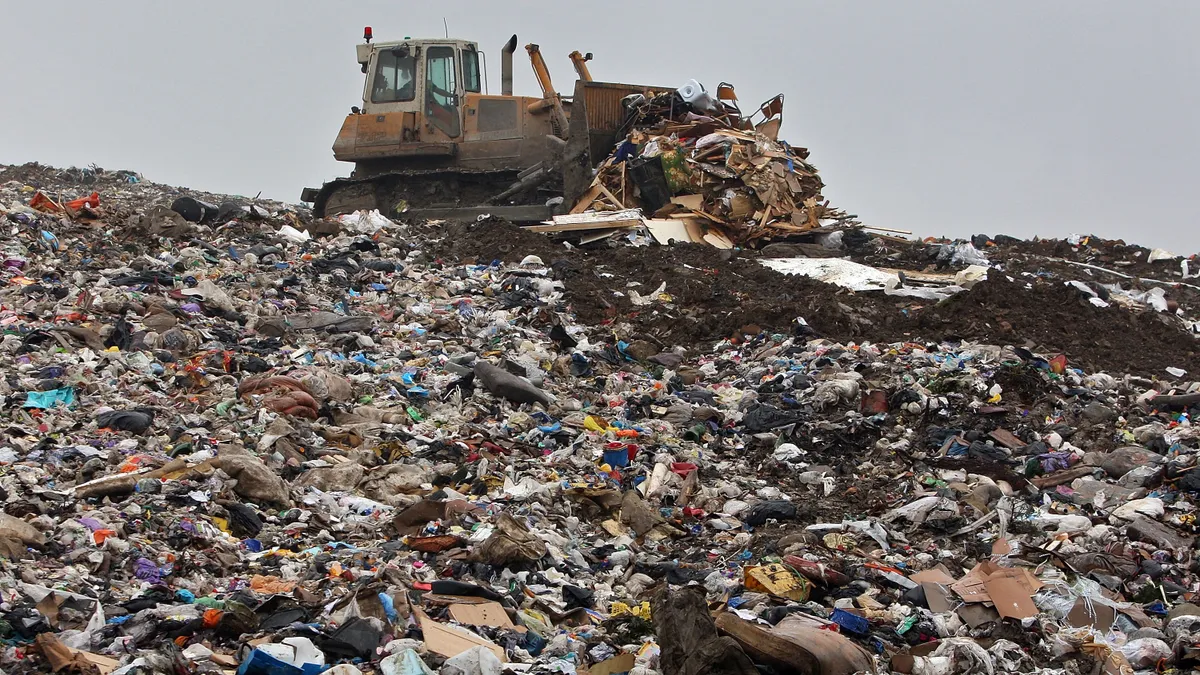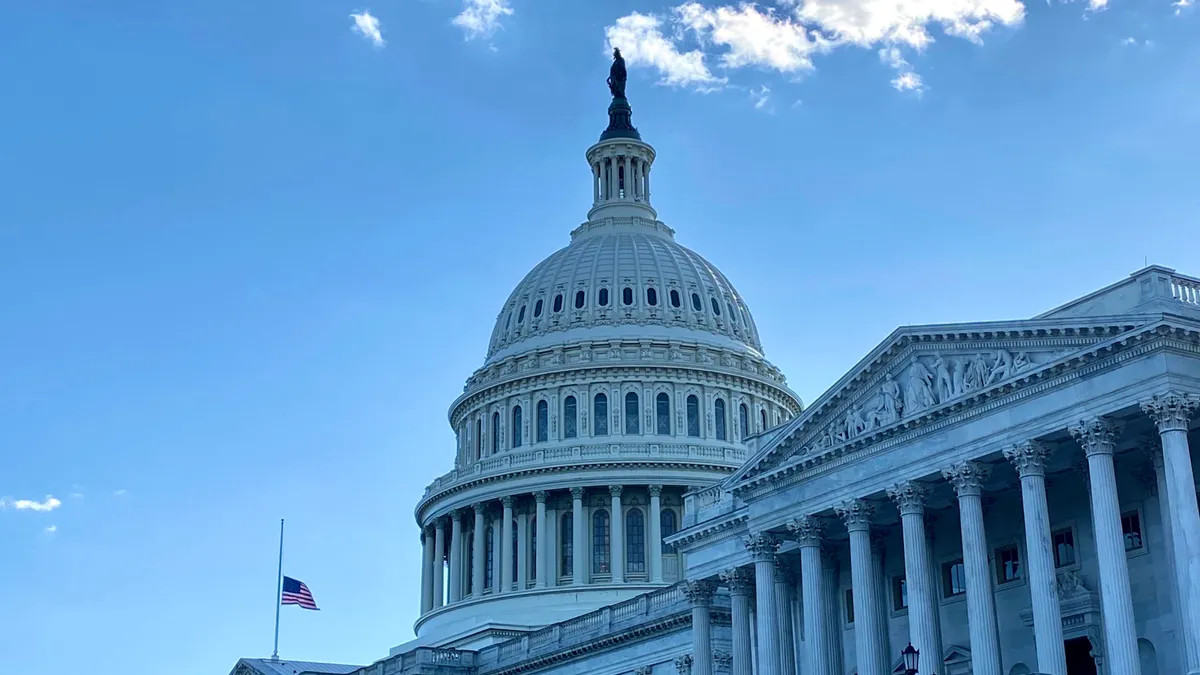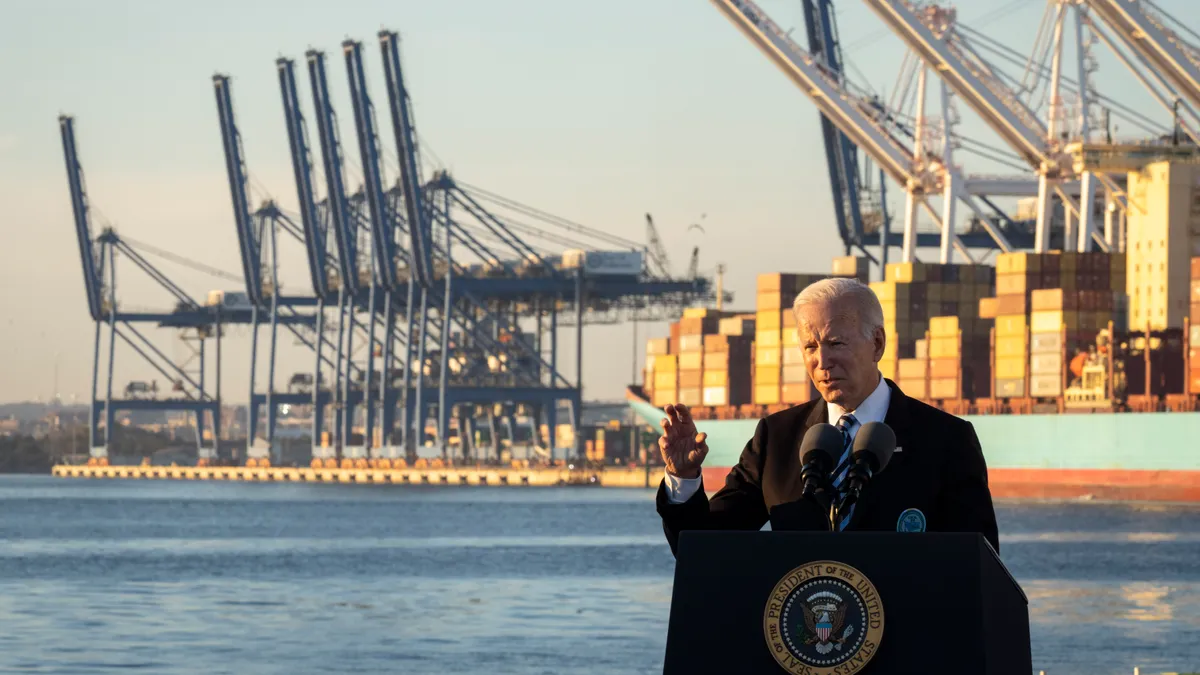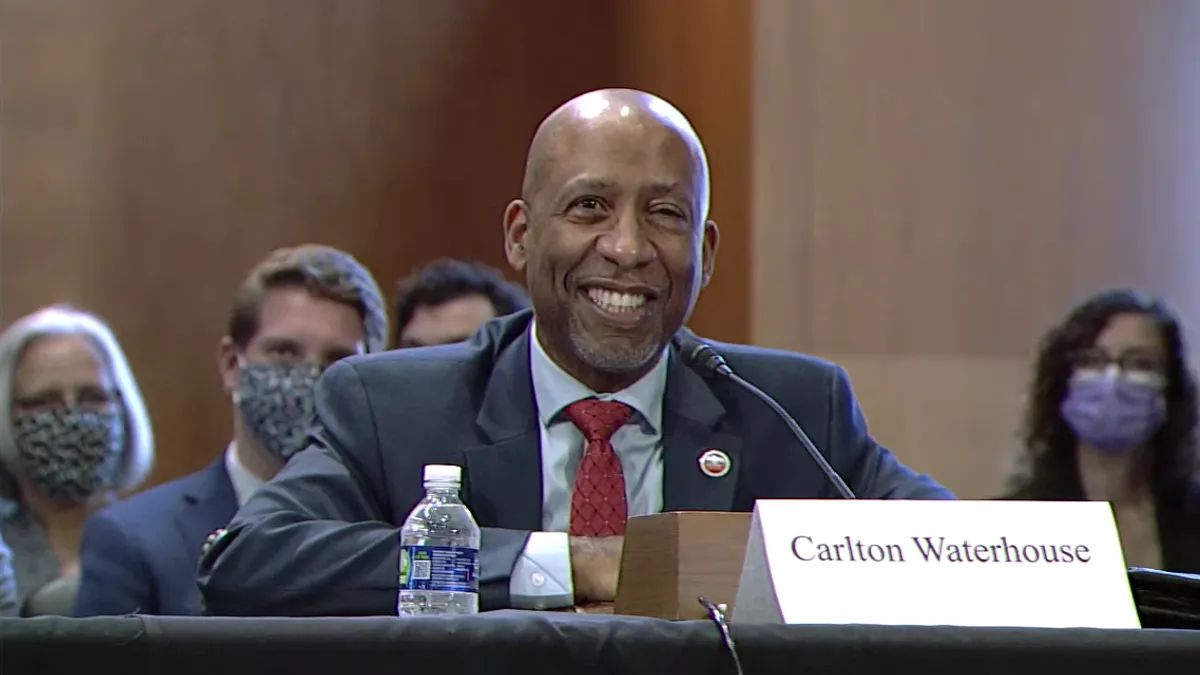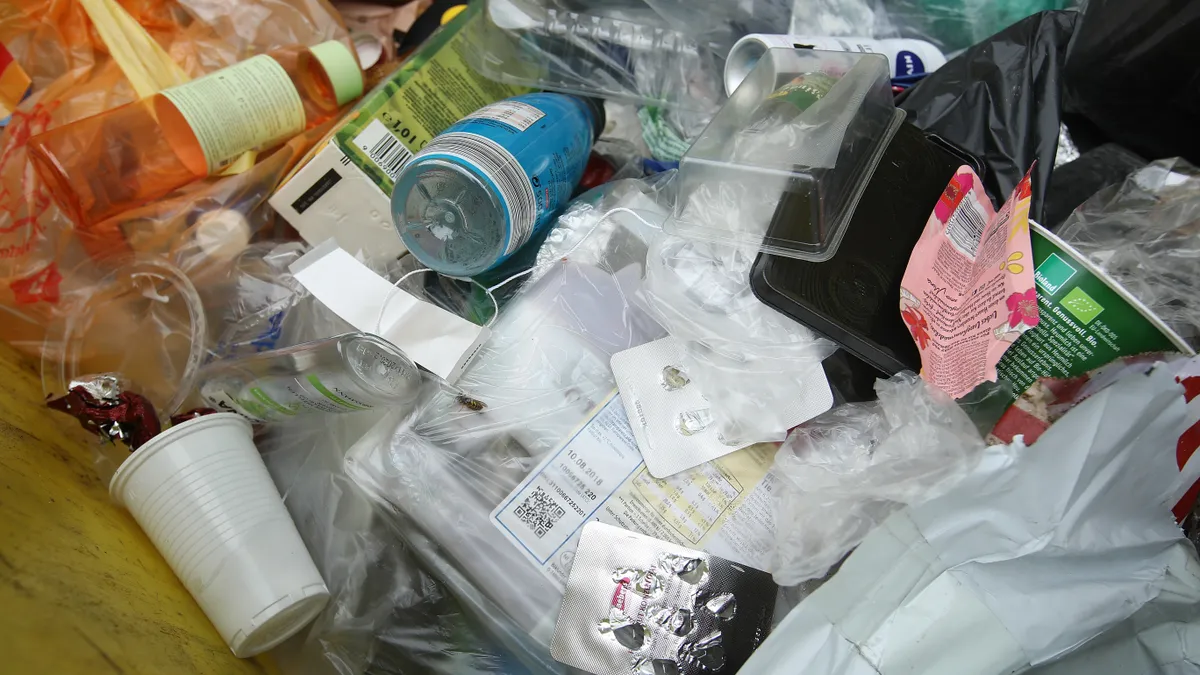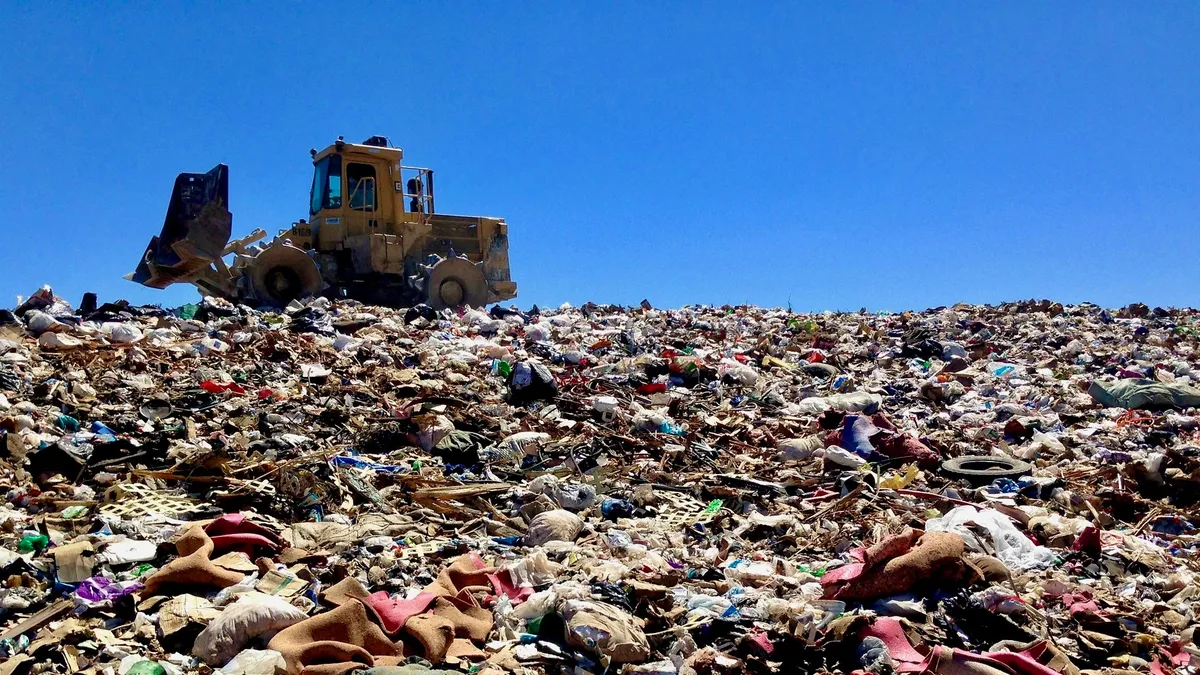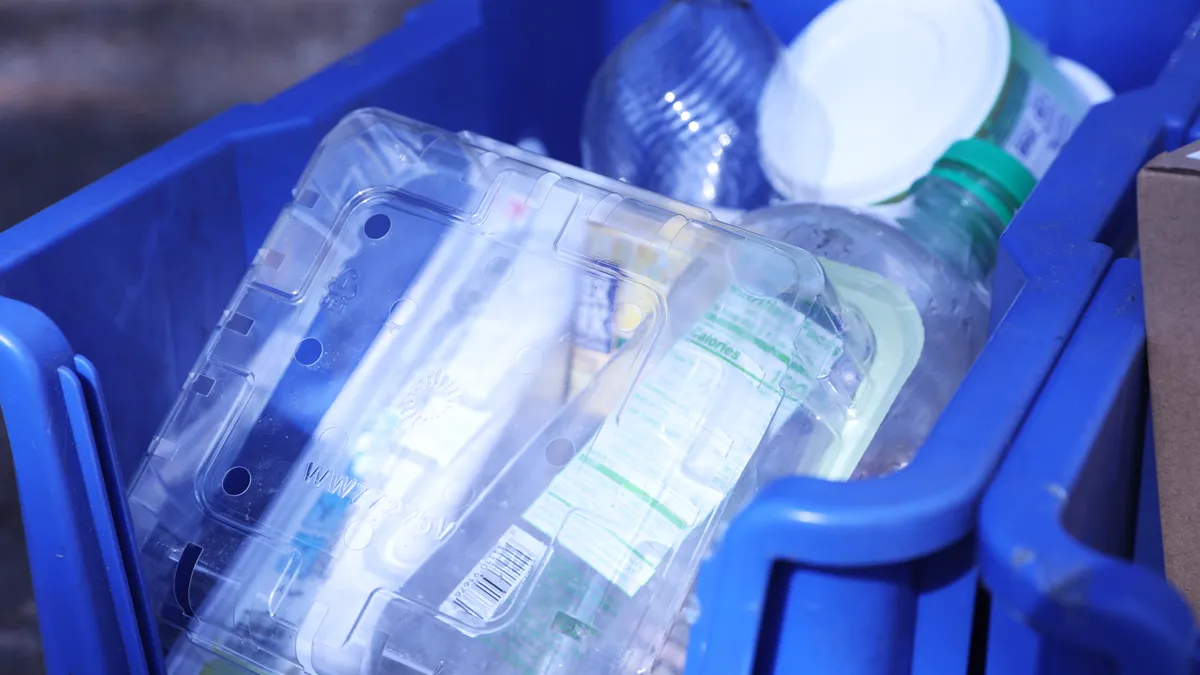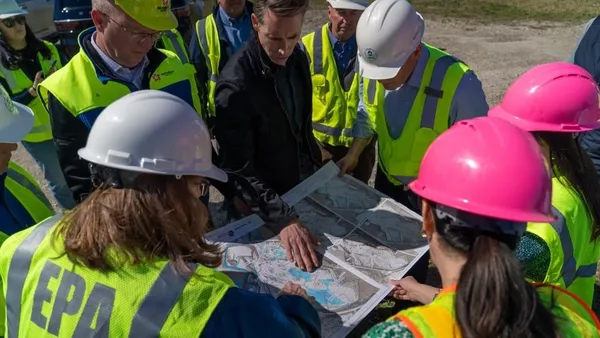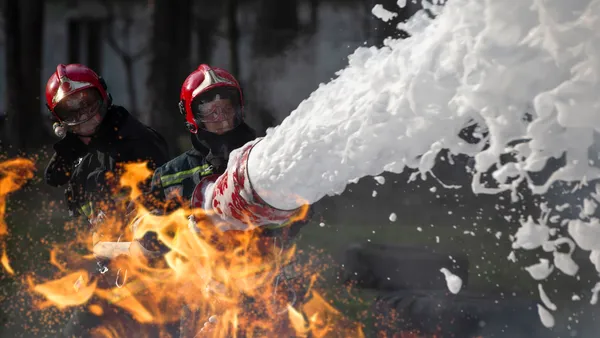Landfill operators have an active and impactful role to play in climate change efforts by mitigating methane emissions and responsibly managing per- and polyfluoroalkyl substances (PFAS), according to speakers at the Solid Waste Association of North America's Landfill Challenges summit June 17.
Despite the financial and regulatory challenges posed by curbing methane emissions and uncertainty around possible future PFAS regulations, speakers urged landfill operators to be proactive and take creative approaches to monitoring and handling the waste stream.
“We know that waste management is a vital area for climate change improvement," said Carlton Waterhouse, deputy assistant administrator, and nominee to be assistant administrator, for the U.S. EPA’s Office of Land and Emergency Management. In his opening remarks, Waterhouse highlighted the "comprehensive approach" the EPA is taking on climate change and named landfill operators as key partners in mitigating greenhouse gas emissions, controlling PFAS and centering environmental justice efforts in the process.
Staying proactive on PFAS
Landfill operators are grappling with looming legal and financial concerns over how they might potentially be required to handle PFAS at their facilities in the future. Landfills do not generate PFAS on their own, but operators still must manage the chemicals because they appear in materials entering the waste stream. Landfills may also have to decide how to handle leachate treatment.
Cleaning up this contamination is a Biden-Harris administration priority, Waterhouse said. Recent examples include moving forward with efforts to designate PFAS and perfluorooctanoic acid (PFOA) as hazardous substances, setting enforceable limits for them in the Safe Drinking Water Act, and convening a new Council on PFAS, led by EPA Administrator Michael Regan, meant to streamline efforts to mitigate and reduce PFAS pollution.
Recent interim guidance from the EPA mentions hazardous waste landfills and solid waste landfills as among the commercially available methods for storing PFAS-containing materials, but Patrick Stanford, general manager for Rochem Americas, argued that landfills are currently the best option “and the only solution available in the next 10 to 20 years” until technology for other methods, such as deep well injection, improves.
Many landfills already have been designed with liners, leachate collection, gas collection systems and other technology meant to prevent hazardous substance pollution, said Stanford. Landfill operators can use this technology to their advantage to position sites as a “part of the solution for PFAS rather than the problem,” he said. “It’s better for landfills to say, ‘We can deal with it, and no one else can.’” Multiple companies already see an opportunity to treat or dispose of PFAS-containing materials depending on how regulations evolve. Some incinerators are making the same case.
Operators should also keep a close eye on news surrounding PFAS lawsuits and state-level regulatory issues, Stanford added. Although there are various laws and regulations related to PFAS in the environment, there currently are no federal laws related to destruction or disposal. Stanford said he anticipates that could change soon at both the state and federal level, in part because of more frequent legal action around PFAS contamination issues. Residents in Parchment, Michigan, recently won a $11.9 million settlement over PFAS contamination in municipal drinking water, he said, and 3M recently sued that state over its stringent new drinking water regulations for PFAS.
It’s also in landfill operators’ interest to keep tabs on technology updates and potential regulatory changes so they can respond appropriately as changes roll out instead of being caught flat-footed, he added. Landfills are lagging indicators of PFAS levels in everyday items, meaning that even as companies stop using PFAS in consumer products, and state and federal regulations further restrict their use in the future, landfill operators will be the last entities left that must deal with PFAS. “You want to stay ahead of regulations,” Stanford said.
Landfills can also take opportunities to engage with the surrounding community, speakers said. The public is also becoming more aware of PFAS issues, Stanford said, because of news headlines and portrayals in popular culture such as the recent movie “Dark Waters,” about a lawyer’s fight against DuPont over PFAS contamination in a small town.
Activists also see PFAS and other landfill-related emissions as part of the broader conversation around environmental justice and the impact landfills can have on nearby communities. Waterhouse said the EPA’s forthcoming final draft of its national recycling strategy will include details about working with industry stakeholders when setting goals to mitigate climate change.
“We’re committed to supporting historically disproportionately impacted communities in the forefront of our actions,” he said.
Managing methane emissions
Waterhouse also highlighted the waste industry as an important partner in reducing methane emissions. He specifically mentioned EPA efforts to reduce food waste, which he said currently is about 44% of trash in landfills today.
“Our efforts to address methane are so critical, given that the impact of methane’s climate-warming potential is 25 times higher than carbon dioxide,” he said, citing a 100-year time scale.
Waterhouse also mentioned the EPA’s recent update to landfill methane regulations meant to reduce greenhouse gas emissions, which went into effect in June after a drawn-out legal battle. The Trump administration had previously delayed the federal implementation after several stakeholders challenged the rule.
The regulation directs states to either submit a plan for complying with the emissions rules or comply with a federal plan meant to cover states that do not create their own plans. Under the rule, about 1,590 landfills will have to install or update control systems to meet EPA's standards if they haven’t already.
Matt Stutz, principal at Weaver Consultants Group, noted that most landfill operators will need to start coming up with a plan for compliance if they don’t currently meet regulations. Since some states, including New York, Florida and Colorado, are still working on varying plans, “it's important that we all stay engaged with the states we're in to make sure that we can continue to know which states have their own plan and which are following the federal plan,” Stutz said.
Newer technology improvements have the potential to help landfills get methane emissions measurement results faster and more accurately, said Samir Kaleem of Orange County Waste & Recycling and Hamilton Rencurrel of Swift Engineering.
They discussed how drones flown above larger landfills, such as the Prima Deshecha Landfill in San Juan Capistrano, California, can measure more pinpointed methane emissions in areas that are hard or impossible for hand-held surface emission scanners to reach. The Prima landfill has almost 700 acres for waste disposal, and it can take a crew about three weeks to report emissions measurements by hand. Landfill operators plan to use a drone outfitted with methane sensors to save time and labor.
“Since it allows us to survey by air, we can do it very quickly,” Rencurrel said.



